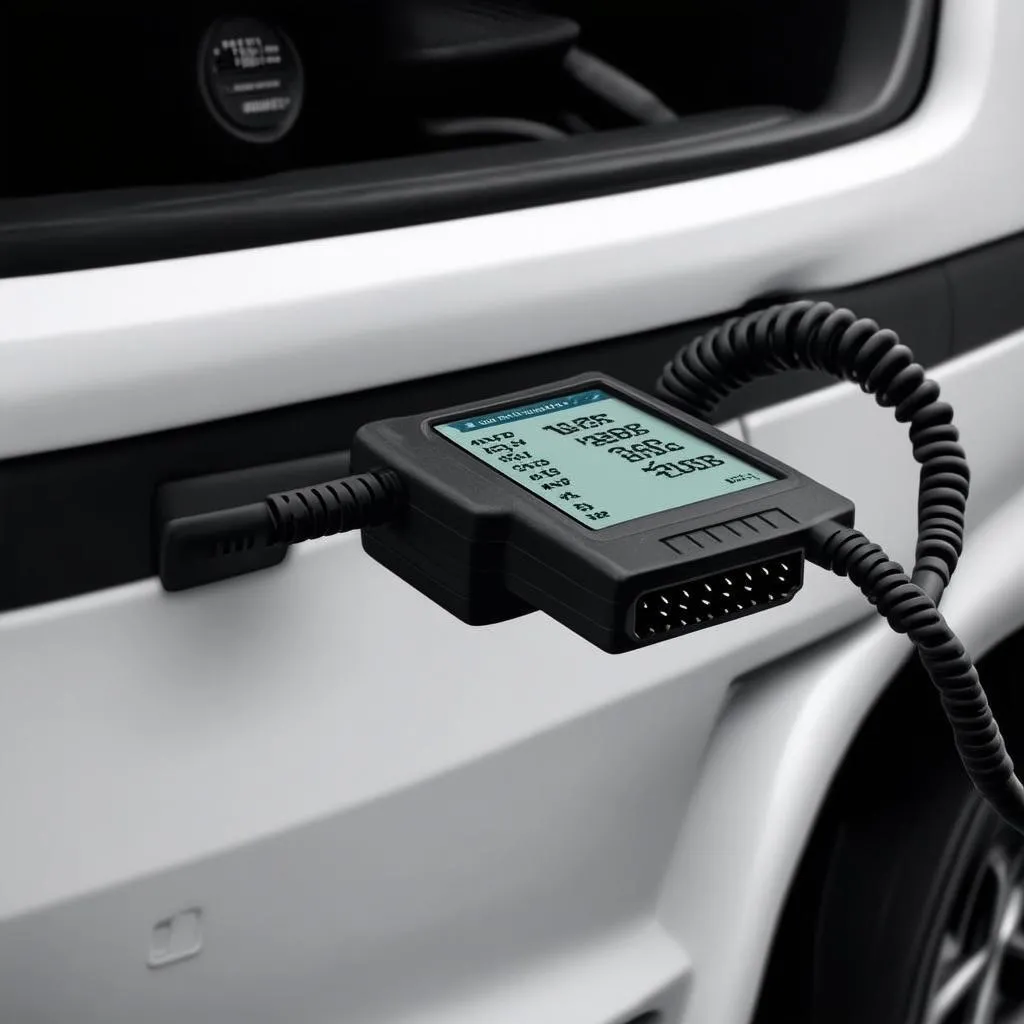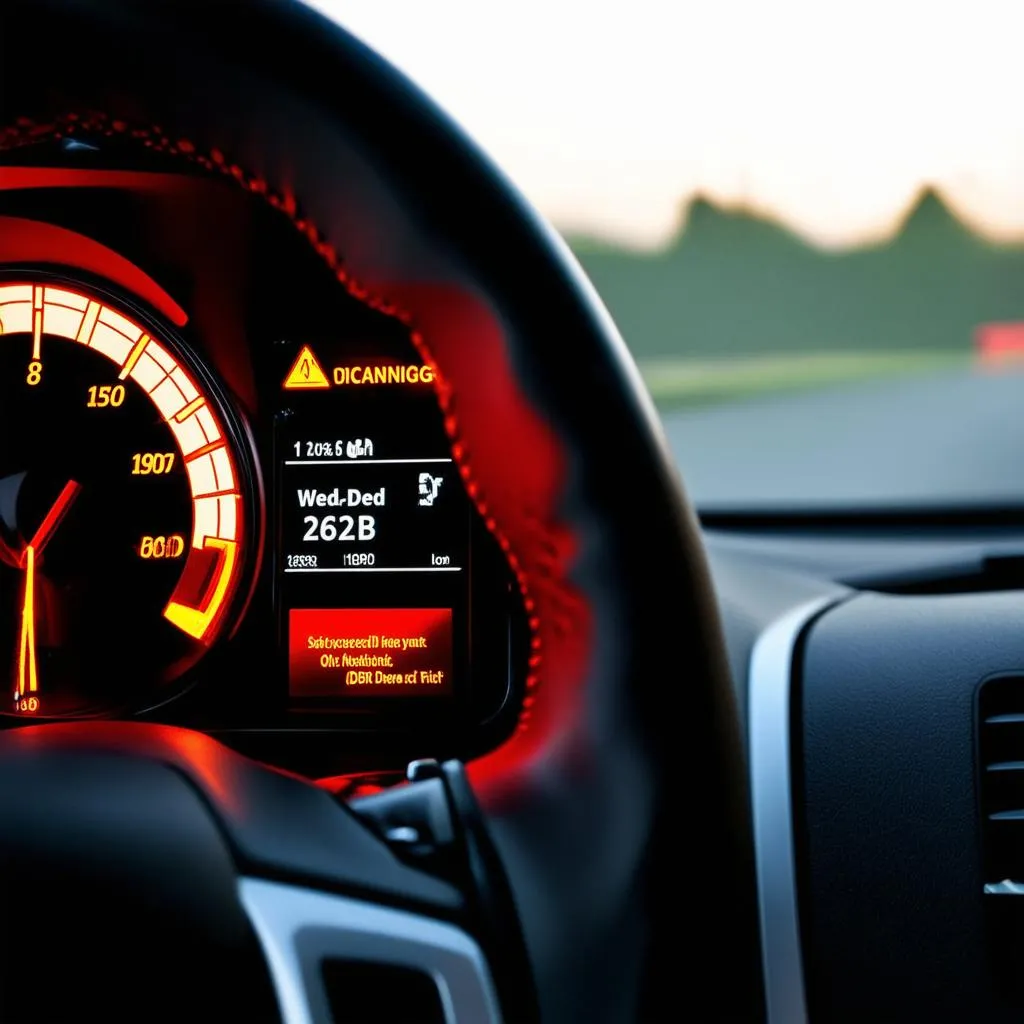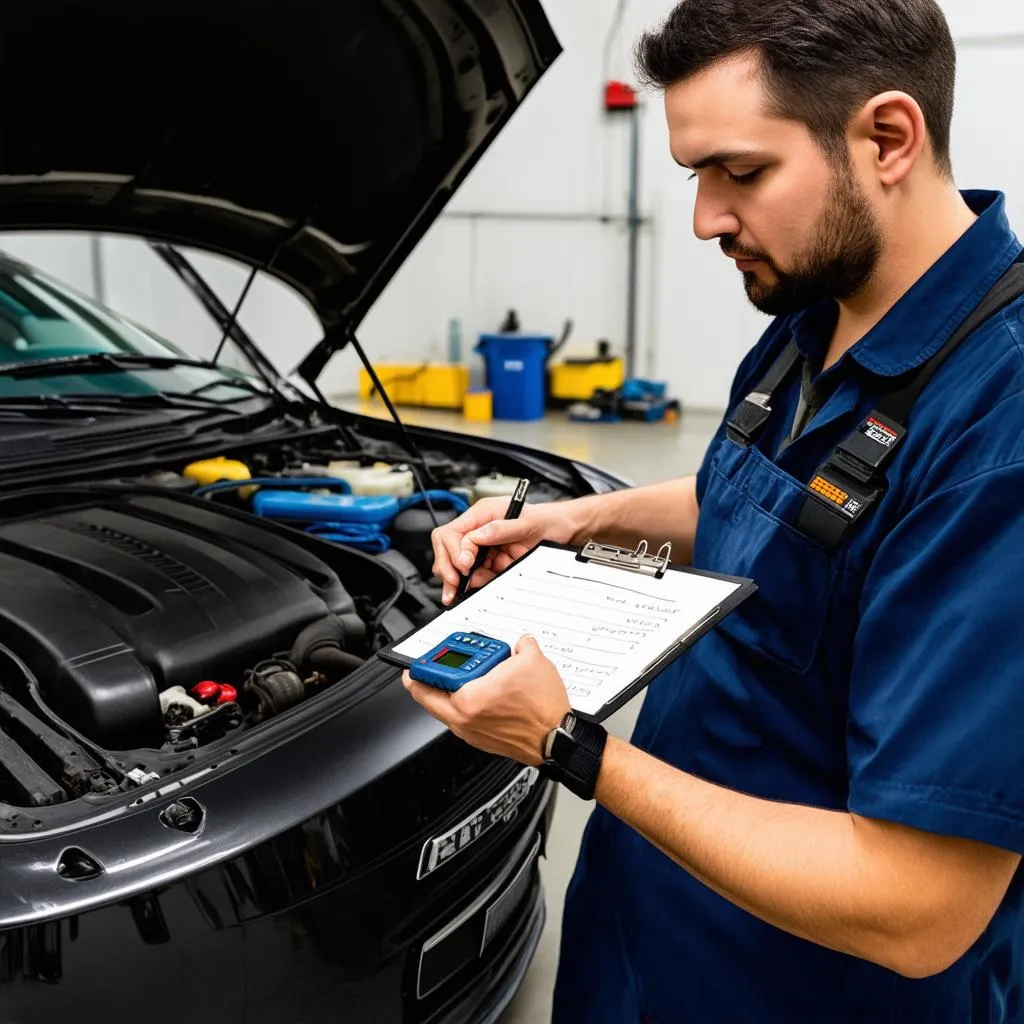Have you ever wondered what those mysterious codes flashing on your car’s dashboard mean? Or maybe you’ve heard about “OBD-II” and are curious about its significance in modern vehicles? Well, you’re not alone. In this comprehensive guide, we’ll delve into the world of OBD-II, unraveling its definition, functionality, and practical implications for car owners.
What is OBD-II? A Deeper Dive into the Definition
The term “OBD-II” stands for On-Board Diagnostics II. It’s a standardized diagnostic system that became mandatory in all vehicles sold in the United States since 1996. Essentially, OBD-II is like a “black box” within your car that continuously monitors various critical systems, such as the engine, transmission, and emissions control.
Imagine a highly skilled detective, equipped with advanced tools, examining every nook and cranny of a complex machine. That’s precisely what OBD-II does for your car. It analyzes data from various sensors and systems, keeping tabs on their performance and detecting any potential issues.
The Power of OBD-II: What It Can Do for You
OBD-II’s primary function is to identify and diagnose problems that may arise within your vehicle’s operating systems. This information is crucial for efficient maintenance, early detection of faults, and potentially preventing costly repairs down the road.
Think about it: early detection of an issue could mean a simple fix, such as replacing a faulty sensor, rather than waiting for the problem to escalate and lead to major damage. OBD-II can also alert you to potential emissions issues, helping you stay compliant with environmental regulations and contribute to a greener planet.
How OBD-II Works: The Under-the-Hood Technology
OBD-II systems utilize a network of sensors throughout the vehicle, constantly collecting data about various parameters. This data is processed by a central computer, called the “Engine Control Unit” (ECU), which acts as the brain of the car.
If the ECU detects any deviations from normal operating parameters, it flags them as potential issues and stores them in its memory. These stored codes can be retrieved using a special tool, known as an “OBD-II scanner”.
What Does an OBD-II Scanner Do?
An OBD-II scanner is a device that allows you to read the diagnostic codes stored in your vehicle’s ECU. By plugging the scanner into your car’s OBD-II port (usually located under the dashboard), you gain access to valuable insights into the health of your vehicle.
These scanners are available in various levels of sophistication, from basic code readers to advanced diagnostic tools that offer detailed performance data and troubleshooting guidance.
Frequently Asked Questions About OBD-II
Q: What does OBD-II stand for?
A: OBD-II stands for On-Board Diagnostics II.
Q: Why is OBD-II important?
A: OBD-II helps identify and diagnose potential issues within your vehicle’s systems, ensuring efficient maintenance, early detection of faults, and possibly preventing costly repairs.
Q: How do I use an OBD-II scanner?
A: Connect the scanner to your car’s OBD-II port (usually under the dashboard) and follow the instructions provided with your specific scanner model.
Q: Can I reset the codes myself?
A: While resetting codes may seem tempting, it’s generally recommended to consult a qualified mechanic for proper diagnosis and repair.
Exploring the World of OBD-II Scanners
OBD-II scanners are a valuable tool for car owners, but choosing the right one can be daunting. The market offers a wide range of options, from basic code readers to advanced diagnostic tools.
Here are some factors to consider when choosing an OBD-II scanner:
- Compatibility: Ensure the scanner is compatible with your vehicle’s make and model.
- Functionality: Decide which features are most important to you, such as reading and clearing codes, live data readings, and advanced troubleshooting capabilities.
- Budget: OBD-II scanners range in price, so determine your budget before making a purchase.
Need help choosing the right OBD-II scanner?
Check out our articles on OBD scanner definition, Actron CP9125C OBD-II PocketScan Code Reader, and best low-cost OBD scanner for more information.
OBD-II: A Boon for Modern Car Owners
OBD-II has revolutionized the way we approach car maintenance. By providing real-time data on your vehicle’s health, OBD-II empowers you to make informed decisions, improve your driving experience, and potentially save money on repairs.
If you’re serious about taking care of your car, understanding OBD-II is essential. Embrace this technology, and you’ll be well on your way to a smoother, more enjoyable driving experience.
Do you have any questions or experiences with OBD-II that you’d like to share?
Leave a comment below and join the conversation!
 OBD-II Scanner
OBD-II Scanner
 Car Dashboard
Car Dashboard
 Mechanic using OBD-II scanner
Mechanic using OBD-II scanner
Need further assistance with OBD-II diagnostics?
Contact us on WhatsApp at +84767531508. Our team of experts is available 24/7 to provide guidance and support with all your automotive needs.